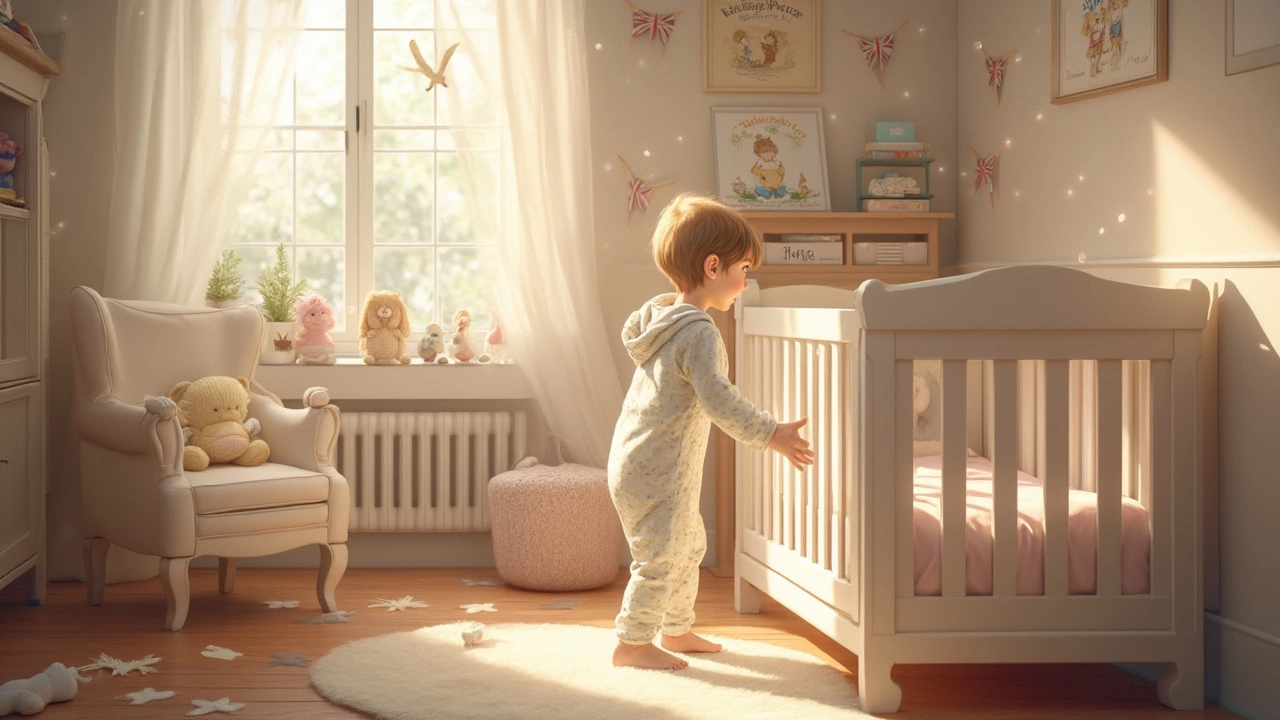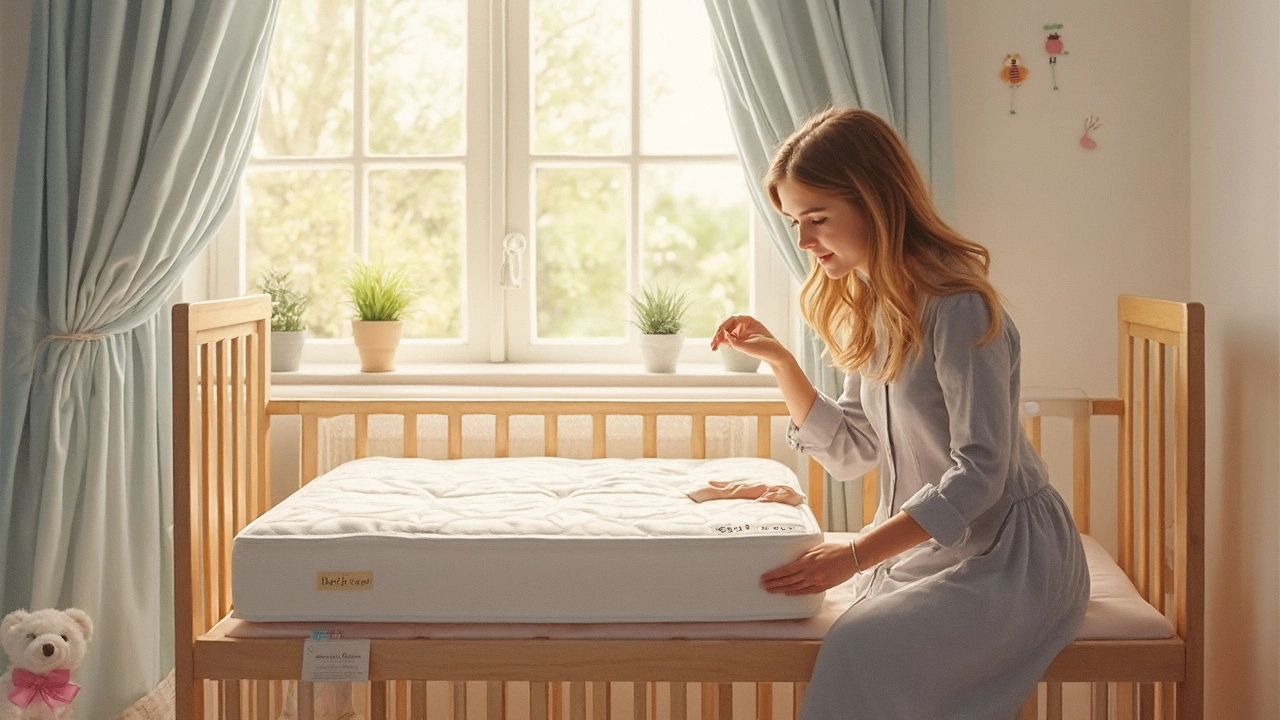Exploring the Pros and Cons of Floor Beds for Toddlers
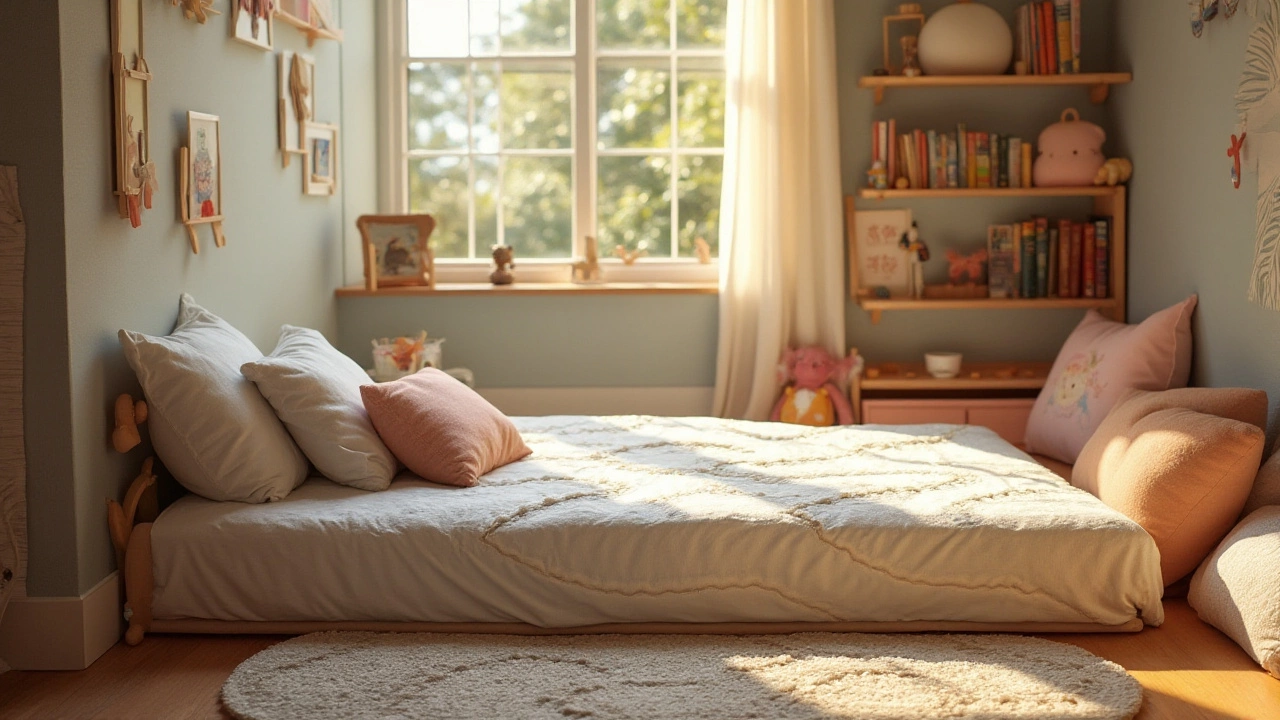
Choosing where and how your toddler sleeps is a significant decision for any parent, often influenced by a blend of tradition, practicality, and parenting philosophies. Placing a mattress directly on the floor has gained traction as both a practical and philosophically interesting choice.
This concept isn't entirely new—cultures worldwide have embraced floor sleeping for generations, and contemporary interpretations often align with Montessori principles, which emphasize fostering independence in children from a young age. By delving into the advantages and potential challenges of this setup, we can uncover whether this approach aligns with your family's lifestyle and values.
- Understanding the Floor Bed Concept
- Benefits of Floor Beds for Toddlers
- Potential Drawbacks and Concerns
- Safety Tips and Considerations
- Setting Up the Ideal Floor Bed Environment
Understanding the Floor Bed Concept
The idea of a floor bed for toddlers is undoubtedly intriguing, embracing both minimalist furniture trends and deeper educational philosophies. Essentially, using the floor as the foundation for a child's sleeping area involves positioning the toddler mattress directly on the ground instead of on a traditional bed frame. This setup taps into simplicity, practicality, and innovative pedagogy, drawing inspiration particularly from the Montessori education approach, which promotes independence and self-directed activity.
Parents considering this option often find themselves attracted to its perceived benefits, such as ease of access for the child. Without the barriers of tall bed rails, children can climb in and out freely, paving the way for empowerment and self-reliance. It's a step away from conventional setups, focusing on the child's perspective by starting from the ground up—literally. This move also aligns with the popular principles of interior design geared towards child safety and freedom of movement within the room.
An interesting aspect of the floor bed concept is its application across varying cultural contexts. In many Asian and European countries, for instance, sleeping low to the ground is a norm, partly for practical reasons such as space-saving. Such arrangements allow for optimizing room space for play and learning activities, creating dynamic environments where living and learning are intertwined. In practical terms, floor beds can make the most of limited living areas, particularly in urban settings where maximizing functionality is key.
Adopting this method involves more than just placing a toddler mattress on the floor. It requires thoughtful consideration of the surrounding environment to ensure safety and comfort. Parents might worry about potential issues like drafts, dust, and varying temperatures, which indeed warrant careful planning. Ensuring the area is clean and hygienic, using soft yet firm bedding, and maintaining a stable room temperature are crucial components. Perhaps surprisingly, many proponents highlight a heightened sense of coziness and security when their children sleep in these open, yet intimate settings.
For those inclined towards educational philosophies, the floor bed can serve as more than a mere sleeping aid; it becomes an integral part of child development. The Montessori method argues that independence starts at home, and providing an unrestricted sleep environment fosters a sense of responsibility and awareness from early childhood. As Maria Montessori stated, "The greatest gifts we can give our children are the roots of responsibility and the wings of independence." By relinquishing some control and allowing choice, children can grow and explore at their own pace.
Understanding the balance between safety, health, and developmental benefits is key when considering a floor bed setup for your toddler. In multi-child homes, these considerations compound; siblings might share spaces or influence each other’s routines. This holistic view considers all aspects of growing up, aiming to create truly child-centric living spaces. Parents often find that with careful adjustments, the transition to a floor bed can be refreshing—both for the cozy nooks it can foster and the deeper life lessons it may unintentionally impart.
"Give children environments that enable them to move freely and explore, and you'll cultivate both freedom and responsibility," said Dr. John Caldwell, a renowned Montessori educator.
Benefits of Floor Beds for Toddlers
Placing a toddler mattress on the floor can be a fascinating choice for several reasons, and one that is steadily growing in popularity. A key benefit of floor beds is enhanced safety. Unlike traditional beds, there's no risk of your child falling from a significant height, making the transition from crib to bed less daunting. This is particularly important for parents with active children who tend to move a lot during sleep. The floor offers a closer proximity to freedom, transforming bedtime into a safe adventure rather than an enclosed activity.
An equally significant advantage of these beds is the promotion of independence. When a mattress rests on the ground, toddlers can easily access it, encouraging autonomy at a crucial stage in their development. This aligns beautifully with the Montessori philosophy, which emphasizes self-reliance and allows children to control their sleep schedule more intuitively. Imagine a child waking up at dawn but not needing to call the parents; instead, they simply step out of bed to start exploring, playing, or even snuggling back down without barriers. This can significantly impact confidence and decision-making skills as they grow.
Floor beds are also a brilliant space-saving solution. For families living in urban settings, where room dimensions often require creative solutions, opting to lower the sleeping arrangement might unlock more of the room's potential. Without a bulky bed frame, there might be extra space for playing, storing toys, or reading. Since toddlers don’t usually require high beds, skipping traditional frames directs focus towards a minimalist, clutter-free room.
Maria Montessori herself suggested that ‘children naturally have a great love for independence. They only become deeply attached to us when we help them to act on their own.’ A floor bed supports this notion vividly.
In addition to space efficiency, a floor bed can foster a nurturing and inclusive environment. Parents often design rooms that reflect warmth and accessibility with pictures set at eye level and toys within reach. Extending this approach to the sleeping spot creates a seamless transition among different activities in a child's day. They can select when to nap or when to rise, which allows them to listen to their own body's rhythms more faithfully.
Furthermore, from a developmental perspective, using a mattress on the floor can address sensory needs better than traditional elevated beds. Children can benefit from the feeling of groundedness that comes from lying directly above the floor. It’s a concept akin to the comfort some find in weighted blankets. This sense of being in touch with the earth might promote deeper, more restorative sleep, which is paramount for toddlers' rapid brain development and energy demands.
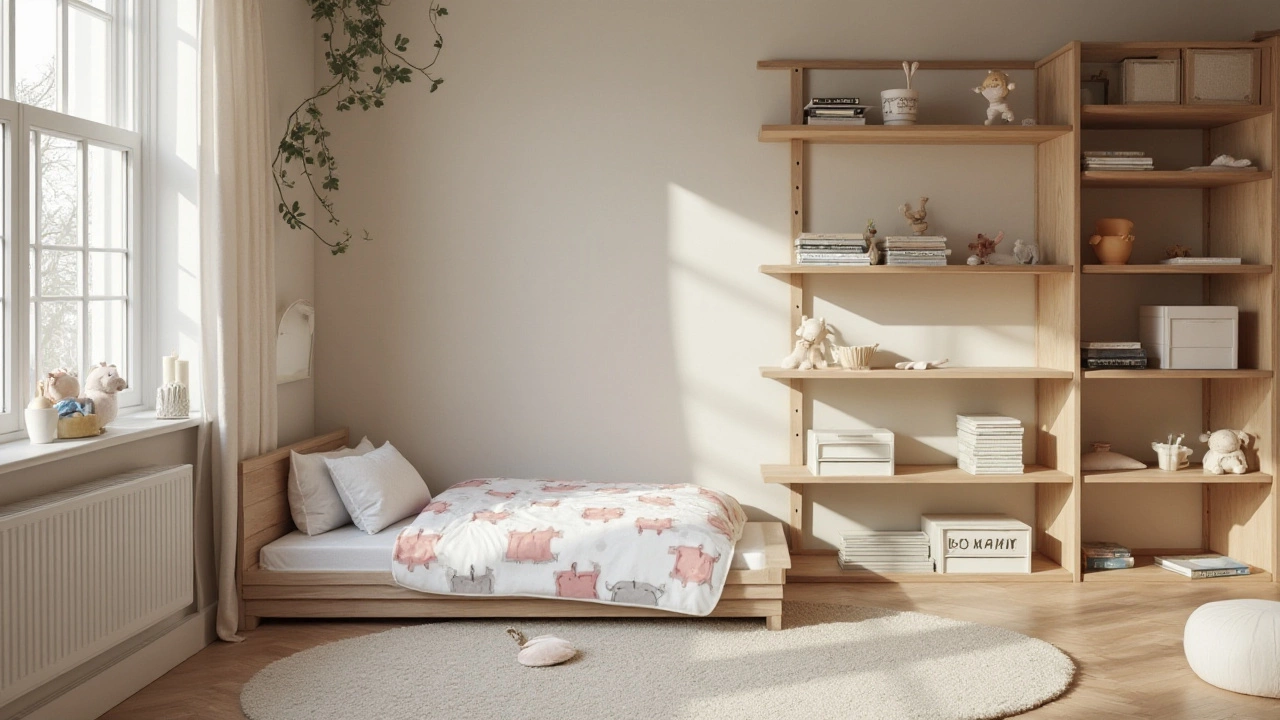
Potential Drawbacks and Concerns
When considering a floor bed for your toddler, it's essential to weigh not only the benefits but also the potential drawbacks. One of the primary concerns that parents might face is related to cleanliness and hygiene. Having a mattress on the floor can expose it to dust, dirt, and allergens more than an elevated bed might. This aspect can be particularly problematic for toddlers with allergies or respiratory issues, as close proximity to floor-level allergens can exacerbate their symptoms. Regular cleaning and vacuuming around the bed area are necessary to minimize these risks, but it may require more maintenance than traditional beds.
Safety Concerns
Even though a floor bed eliminates the risk of falling from a height, there are still safety aspects to consider. A toddler could potentially roll off the mattress during sleep and find themselves on a cold, hard surface. This could be uncomfortable and might disrupt their sleep pattern. Surrounding the mattress with a soft rug or padded play mats can mitigate this issue, creating a cushioned landing area if the child does roll off the bed.Another aspect revolves around the child’s increased mobility. With a toddler mattress and floor bed, there's greater freedom for the child to explore their room unattended. While this promotes independence, it also means parents need to be vigilant about creating a child-safe environment. All furniture needs to be secured, corners should be padded, and potentially dangerous items must be kept out of reach. This freedom can be a double-edged sword depending on the child's curiosity and the layout of their room.
Durability and Longevity
Durability and longevity of a floor bed setup can also raise concerns. Mattresses not specifically designed for floors may deteriorate quicker due to lack of ventilation or moisture accumulation beneath them. Floors don't allow for the airflow that a bed frame might provide, potentially leading to mildew or mold issues, especially if the room is prone to dampness. Opting for a mattress designed for this purpose or using a slatted base can help alleviate these issues by providing some airflow.Lastly, it can be crucial to recognize cultural differences and norms when adopting a new method of child rearing. Some families might face pressure from relatives or friends who are skeptical of non-traditional sleeping arrangements. Adhering to a different approach might require addressing concerns of well-meaning but worried relatives. As
Amy Peterson, a child development specialist, suggests, 'It's important for parents to consider both the physical and psychological environment they are creating for their children, blending tradition with modern insights.'
Ultimately, while the idea of a floor bed for toddlers presents a palette of developmental and practical advantages, recognizing and addressing these potential pitfalls is key. With proper planning and adjustments, many of these concerns can be effectively managed, ensuring safety and comfort for your child. Understanding these dynamics allows parents to tailor the bedroom environment to best suit their child's needs, balancing safety with autonomy. With thoughtful consideration, a floor bed can be an enriching experience for your toddler.
Safety Tips and Considerations
When considering placing your toddler's mattress on the floor, ensuring their safety is paramount. This setup might seem simple, yet requires thoughtful precautions to create a haven where your child can sleep soundly and play without hazards. First and foremost, it's essential to inspect the floor area thoroughly. Make sure that the surface is clean, free of dust, and completely dry to prevent any allergic reactions or respiratory issues. A solid understanding of potential environmental dangers, such as drafts from windows or heaters situated too closely, can help avert unwanted discomfort for your child. Creating a cozy, warm spot can be as easy as layering with a thick rug or installing a heating element beneath the surface.
Another crucial factor to consider is the sturdiness and material of the toddler mattress you choose. Opting for hypoallergenic options can guard against skin irritations and provide additional peace of mind as your child rests. When it comes to selecting the mattress itself, prioritize those with features designed for little ones, such as waterproof covers and firm support. Keeping it all secured with tightly fitted sheets mitigates risks of entanglement, prioritizing your toddler’s comfort and your serenity.
Understanding your toddler’s behavior and individuality is equally vital. If they tend to be adventurous climbers, or especially active sleepers, it’s beneficial to place soft mats or padded bumpers around the edges. The freedom this setup offers is invaluable, but with that comes the need for heightened vigilance. Limiting access to potential dangers, like electrical outlets and heavy furniture, must be a priority. Childproofing the environment by covering outlets and securing furniture ensures that nighttime escapades don’t turn troublesome.
Additionally, many parents favor incorporating the Montessori bed philosophy, and this method promotes independence right from an early age. Take note that the height of the mattress must be suitable for your child to climb in and out effortlessly, bolstering their autonomy while nurturing self-confidence. Create a design that encourages exploration, yet contains appealing boundaries, which ensure that nightly wanderings remain safe. There’s valuable strength found in simplicity, and this approach thrives on it.
Engagement with your toddler’s changing needs is vital, and practicing flexibility amid this unique sleep setup is key. Reflecting the words of Dr. Benjamin Spock, a renowned pediatrician known for his distinctive approach to baby and child care, could be insightful: "Trust yourself. You know more than you think you do." Relying on informed instincts ensures your child’s safety, and helps you grow confidently as a parent.
Lastly, it may be helpful to establish a routine inspection of the sleep area to adapt to seasonal changes and ensure everything remains optimal for your toddler. By proactively addressing potential challenges, you’re fostering an environment that is not only practical but incredibly nurturing. Choose to blend comfort, practicality, and style, turning this transitional phase into a joyous experience for both you and your little one.
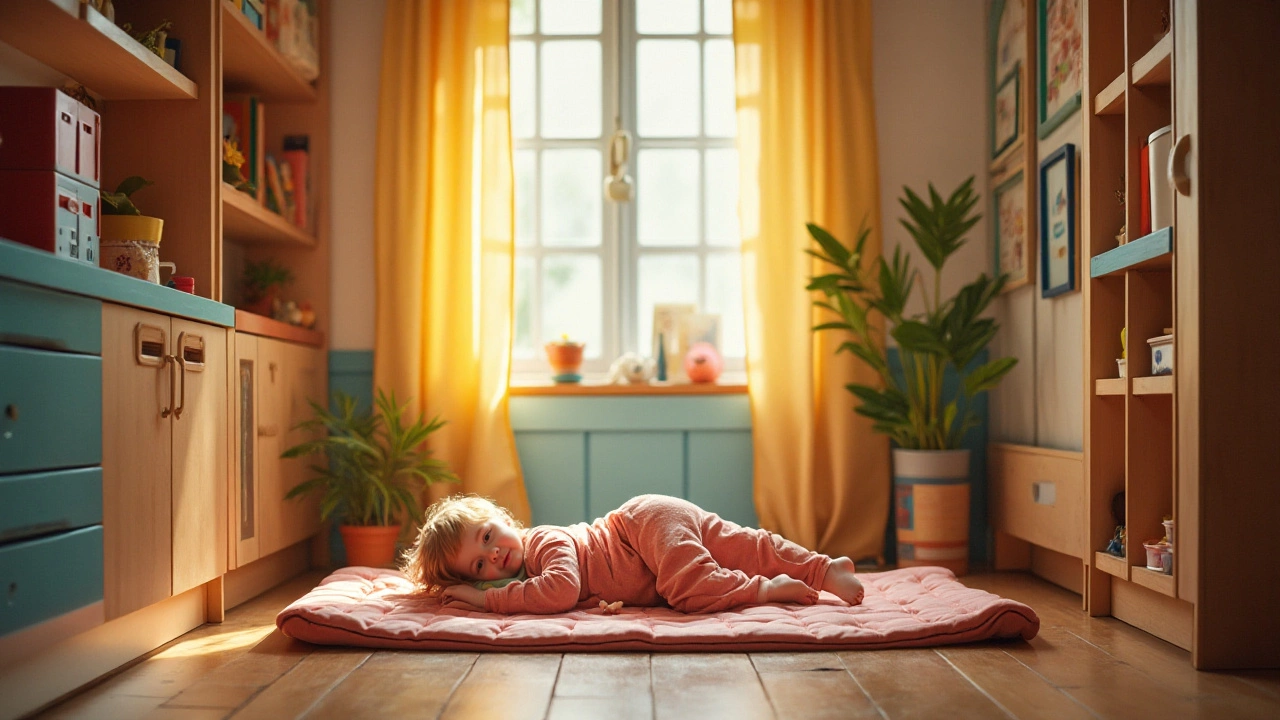
Setting Up the Ideal Floor Bed Environment
Creating an ideal sleep space for your toddler with a mattress on the floor involves careful consideration of several factors to ensure comfort, safety, and nurturing independence. To start with, let’s delve into the key elements that can help transform a simple floor mattress setup into a cozy, inviting sanctuary. Key considerations include the type of mattress, the surrounding room environment, and additional comfort-enhancing accessories such as soft textiles, low-sheen lighting, and stimulating yet calming décor.
First, you must choose the right toddler mattress that suits the purpose of a floor bed. Look for a mattress that is firm enough to support young spines yet comfortable for little bodies. Many parents opt for organic or hypoallergenic materials to ensure a safe and healthy environment for their child. It’s important to check that the mattress has a waterproof cover or consider adding one, as spills and accidents are common with toddlers. To add a layer of safety, make sure the mattress lies flat without any space between it and the wall, minimizing any risk of entrapment.
Creating a welcoming ambience, supplement the mattress with plush, washable bedding that has attractive prints or colors, tailored to your child’s preferences and interests. Using a variety of textures like cotton or jersey can add not just visual interest but also tactile comfort, promoting better sleep. Surround the sleeping area with a selection of their favorite stuffed animals or comfort objects, while ensuring not to overcrowd the space as it may become overwhelming.
With respect to the room environment itself, a prime feature to consider is lighting. Opt for soft, warm lighting to create an inviting atmosphere that encourages relaxation and winding down at bedtime. Adjustable or dimmable lighting can be particularly helpful to gradually signal the transition from playtime to sleep time. Introducing elements of nature, such as plants or nature-inspired wallpapers, can further enhance the tranquillity of the setting, offering comforting visuals that ease the child into restful dreaming.
Here's a useful tip, often shared by Montessori educators: Accessibility and independence are at the core of this philosophy, so ensure that shelves, books, and other commonly used items are at your child’s height. This allows them to access these items freely without needing constant adult assistance, encouraging autonomy and decision-making from an early age. As Jennifer L. Miller from the Center for Parent-Child Learning suggests, "Having everything within reach fosters a child's confidence and instills a desire to explore."
Lastly, let’s not forget safety measures. It's crucial to childproof the rest of the room meticulously, anchoring any furniture like shelves or dressers to avoid tipping hazards. Ensuring cords from blinds or electronics are out of reach is another paramount aspect. With these considerations, you are not only providing your toddler with a safe bed, but also a nurturing space that contributes to their growth and well-being.
